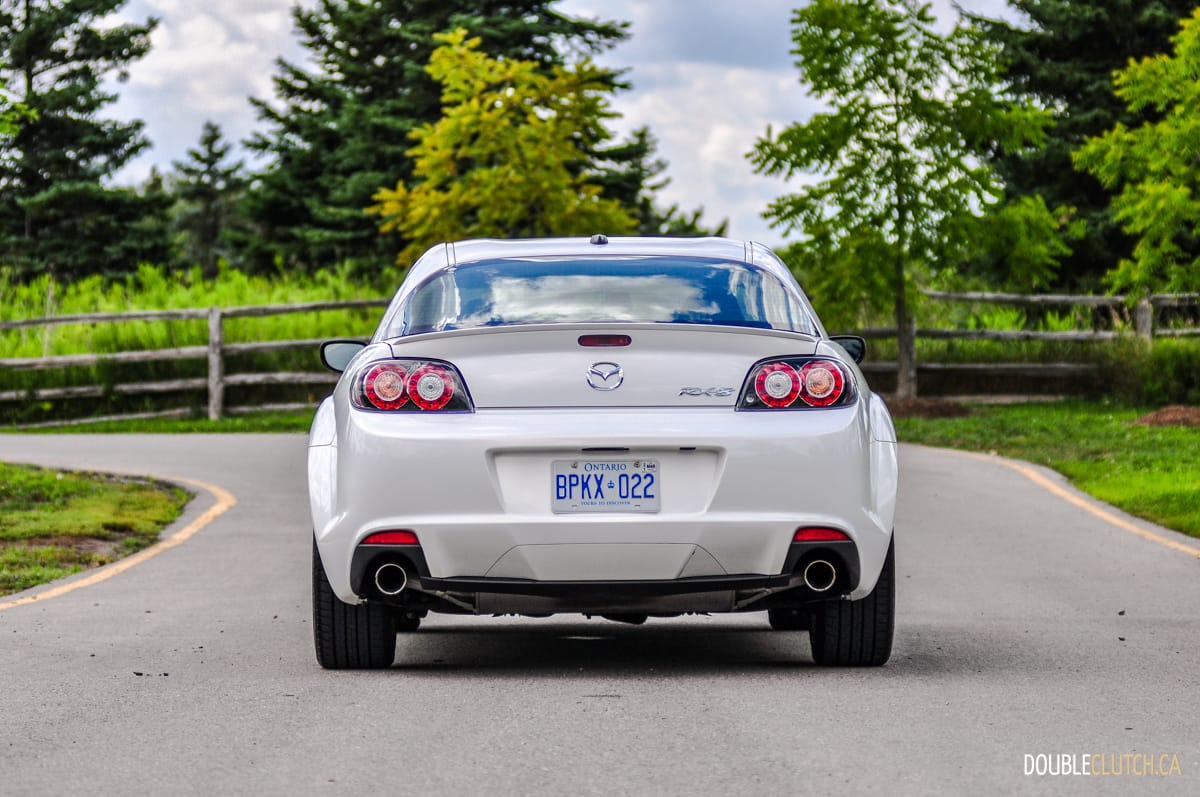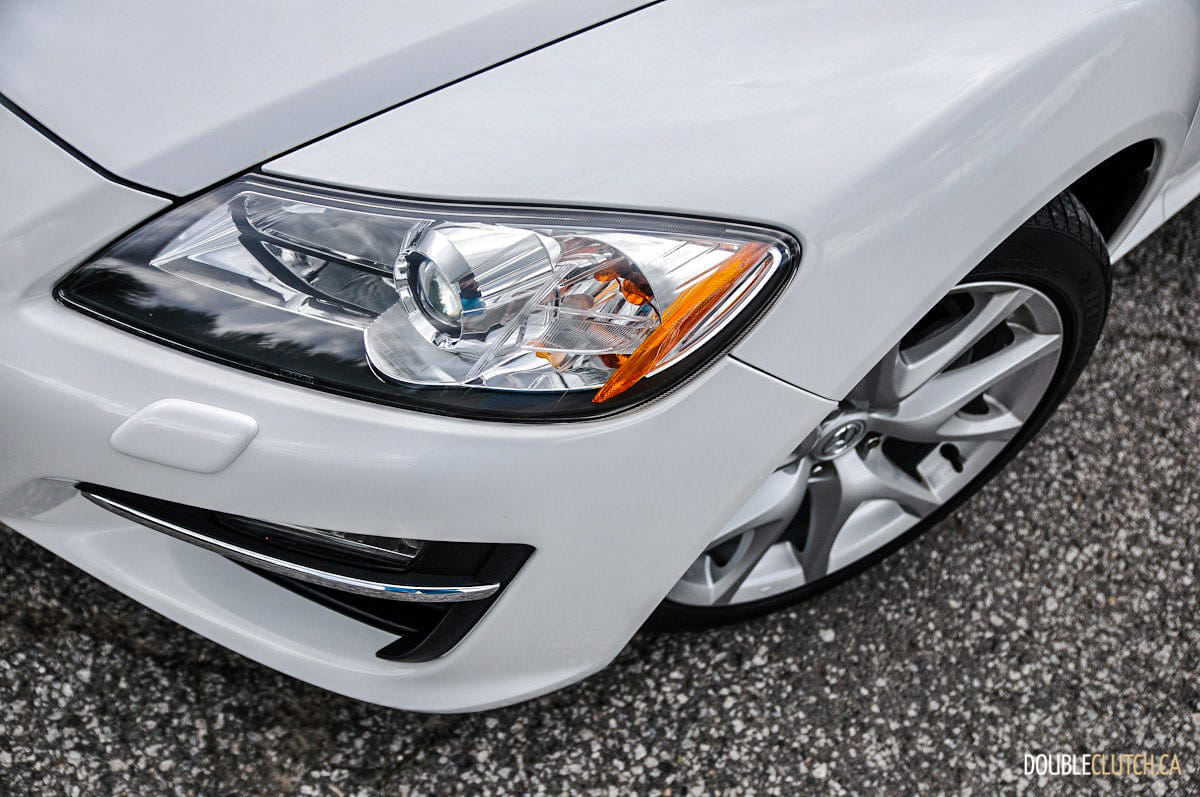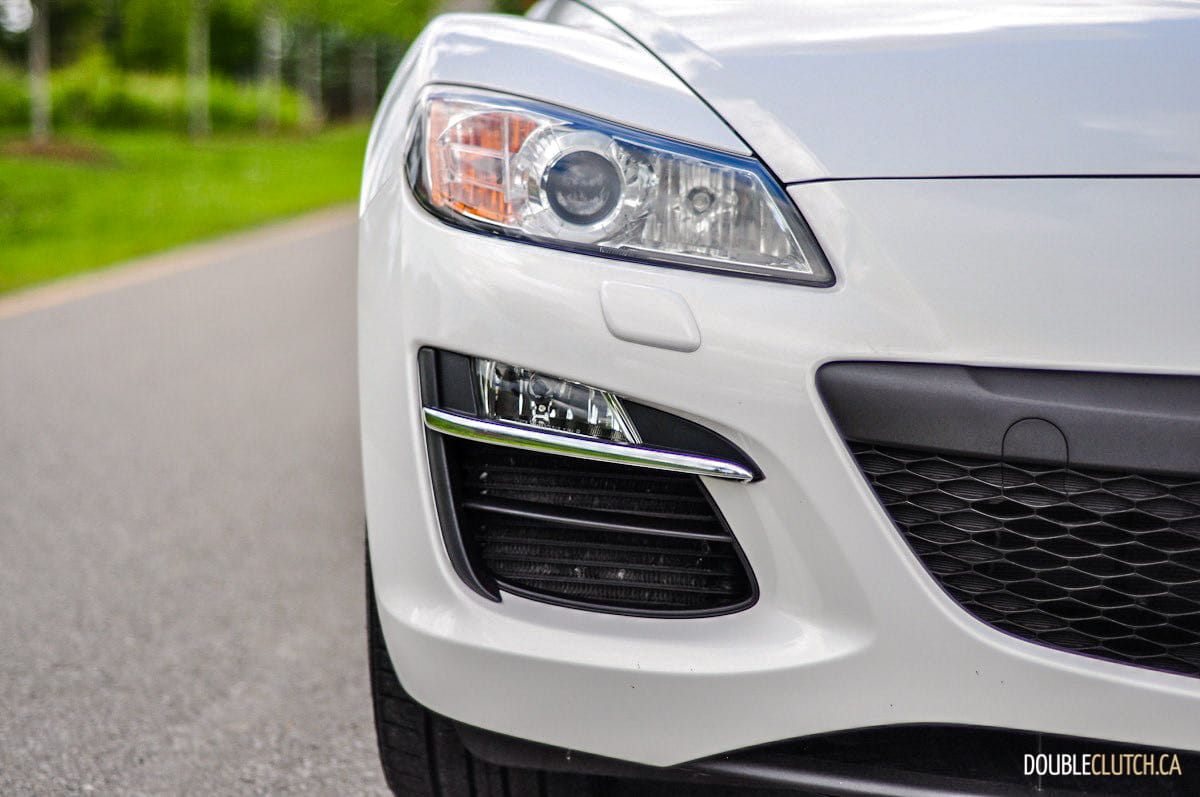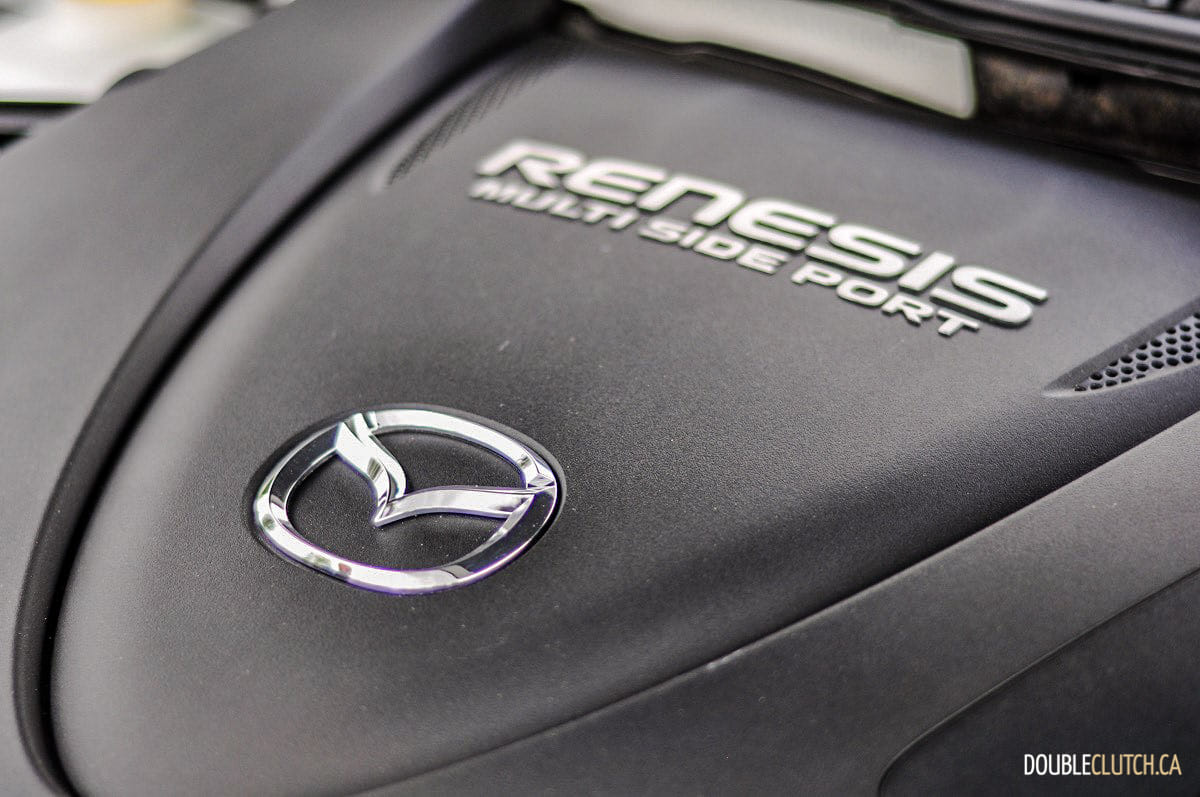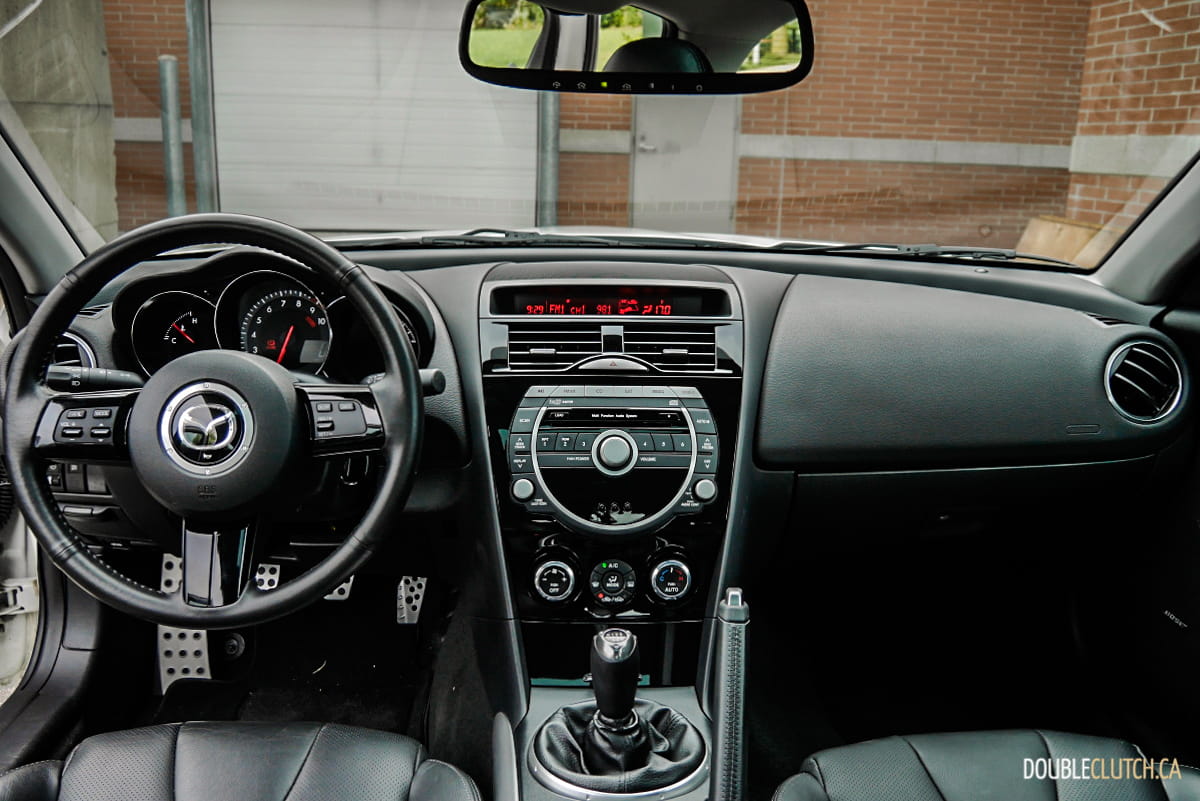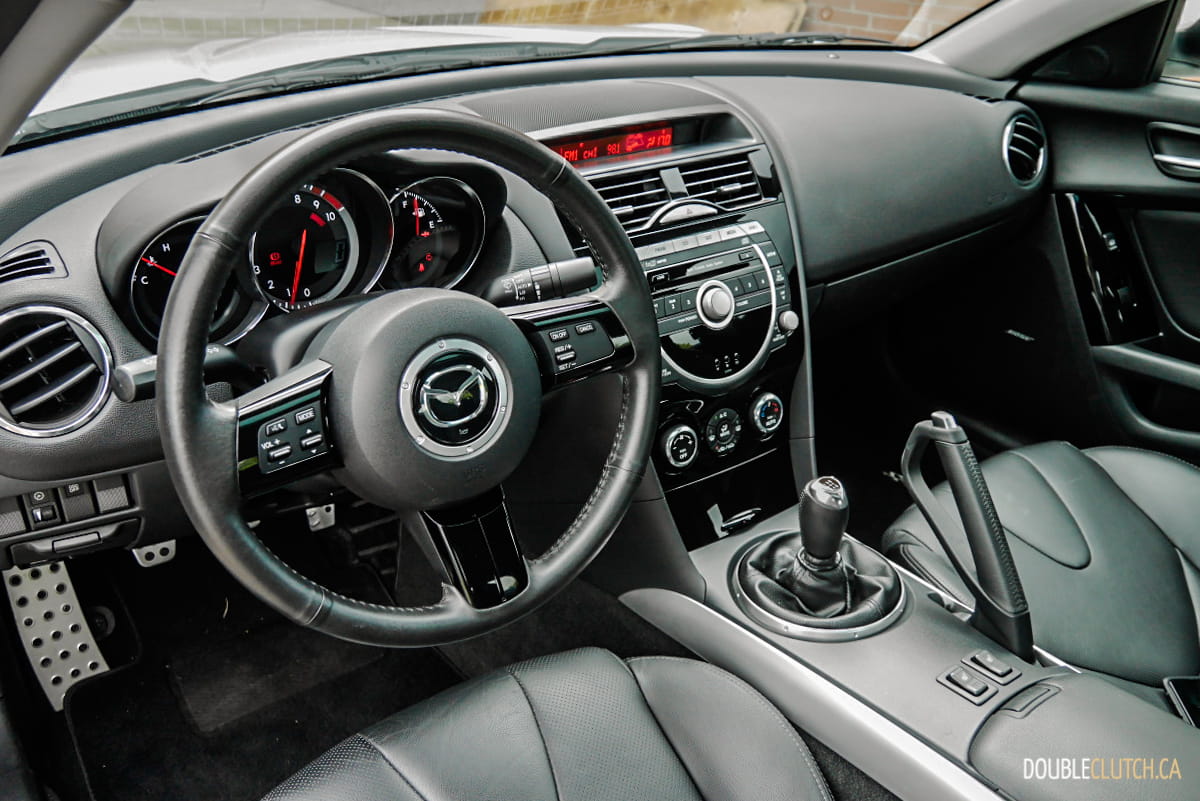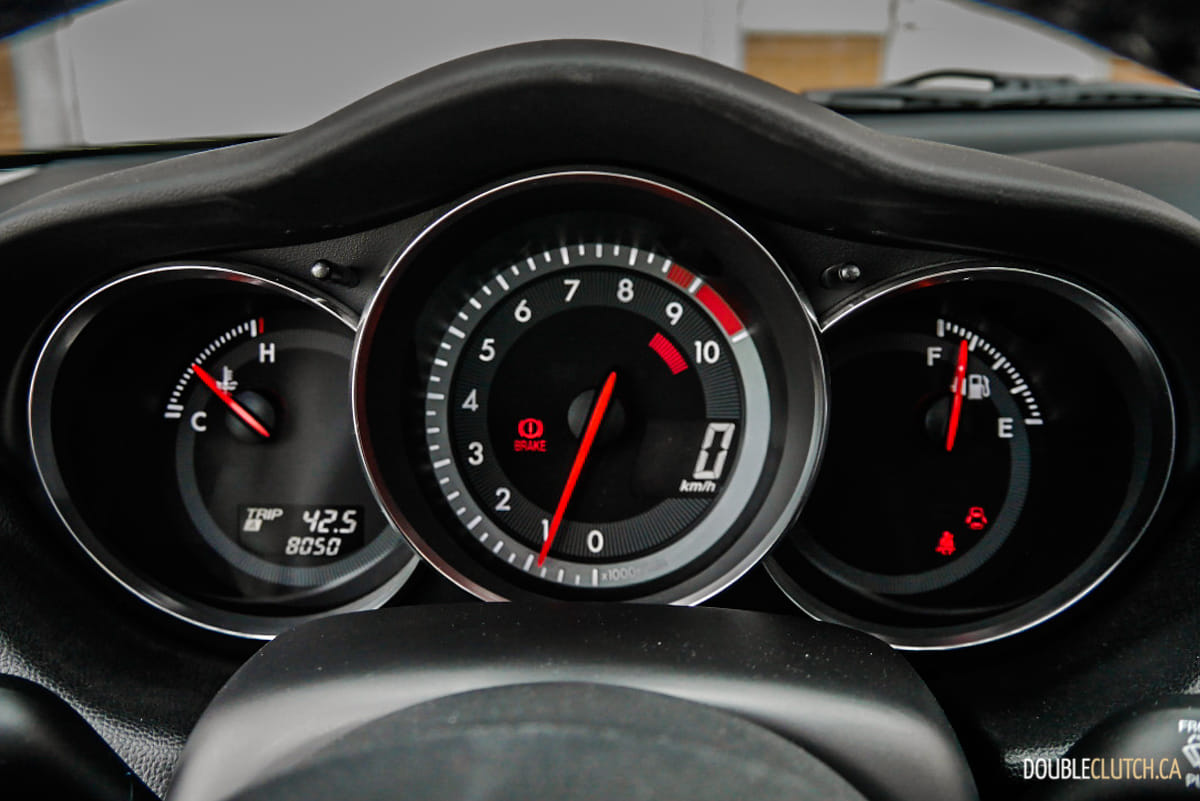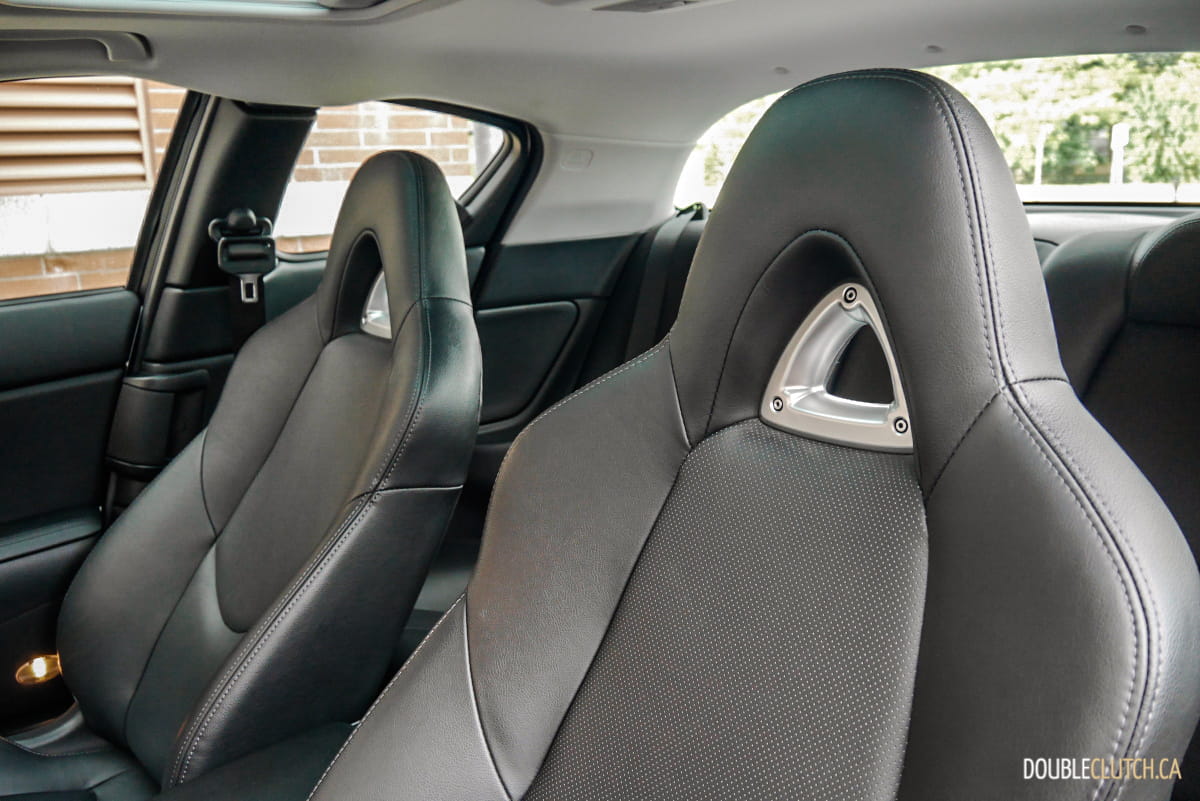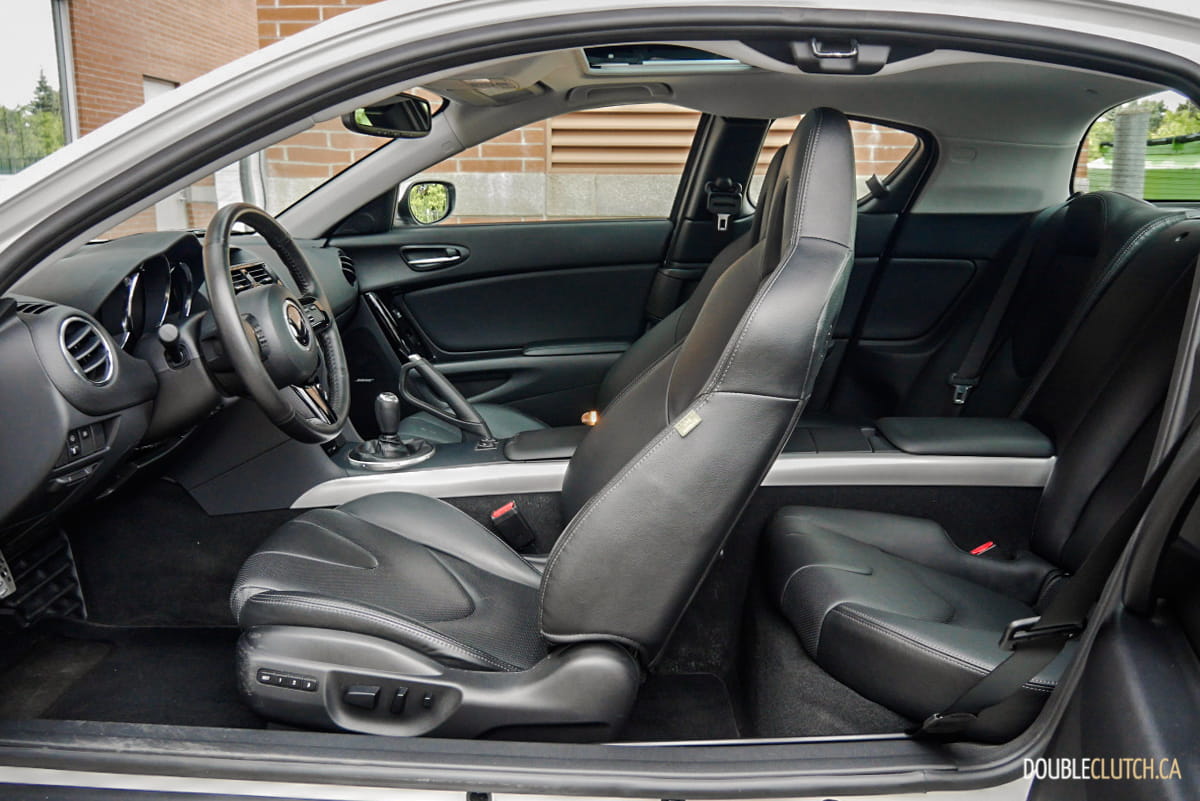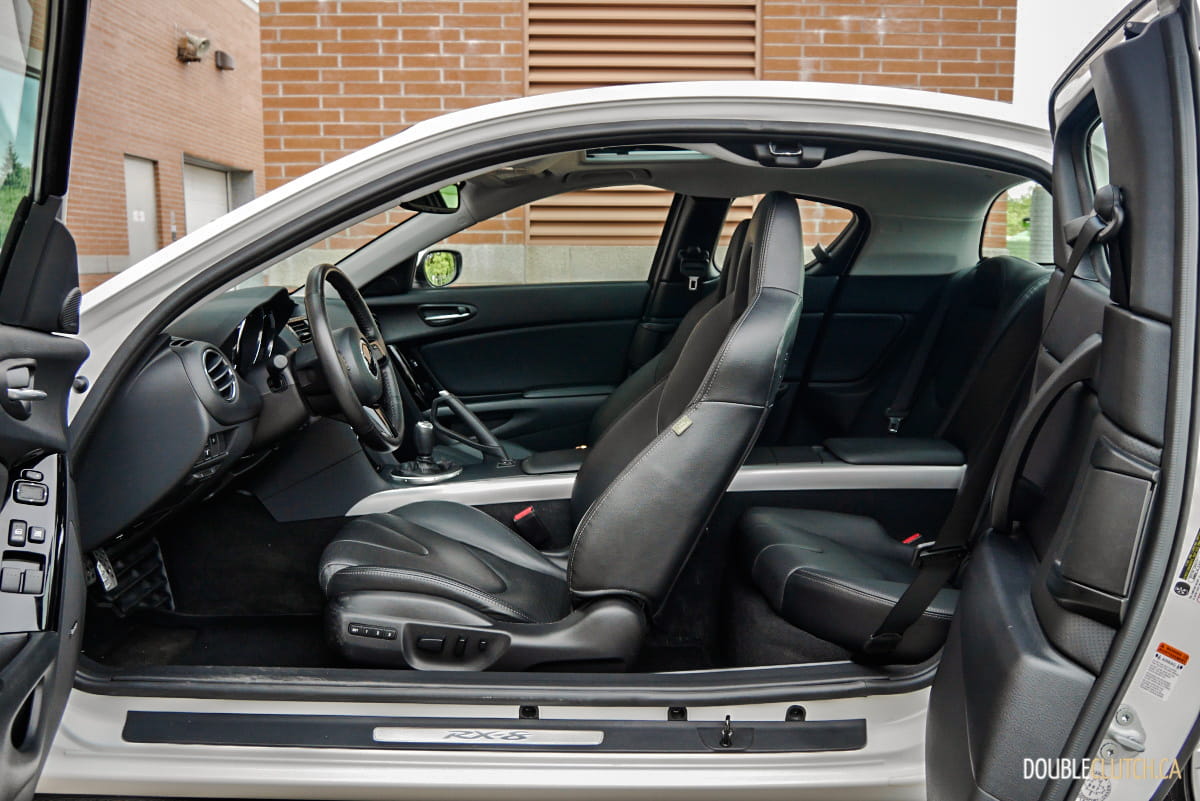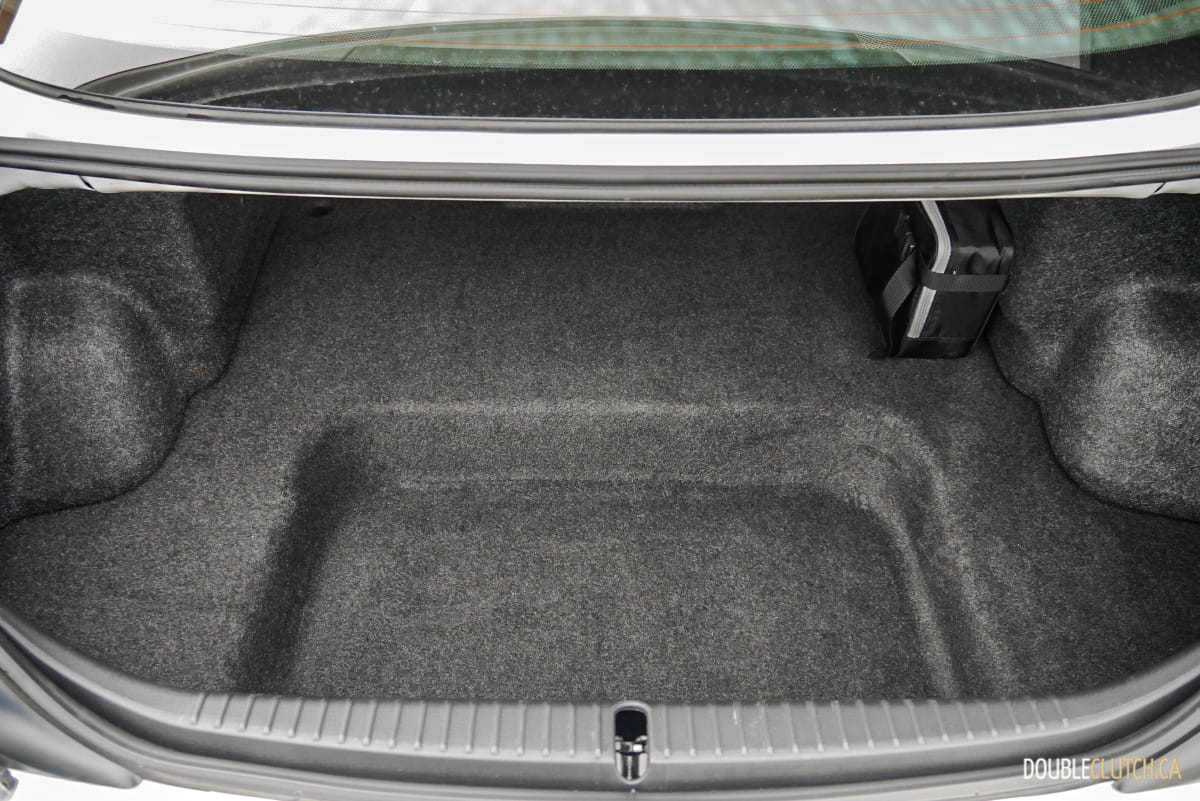The year was 2003 when Mazda launched the Mazda RX-8, a four-door sports coupe that served as the successor to their most iconic car ever, the RX-7. I remember being a car-obsessed teenager when the RX-8 was released, reading up every specification about the car, spending countless hours on the forums staring at its unique styling, and having my mind-blown about its handling abilities when I had the opportunity to test drive a friend’s. This 2011 Mazda RX-8 is no different.
Fast forward to 2020, eight years after the last rotary engine left the production line, we were given the opportunity to sample a 2011 Mazda RX-8 owned by Mazda Canada. This pristine 8,000-kilometer example resides inside Mazda Canada’s heritage garage, next to other cult classics like a 2004 Mazdaspeed MX-5 (reviewed here) and this 1993 Mazda RX-7 (reviewed here). With a big grin on my face, I picked up the credit card key fob and set out for a trip down memory lane.
Back when the RX-8 was on showroom floors, the concept of a four-door sports coupe was not nearly as mainstream as it is today. Featuring what Mazda calls a ‘Freestyle’ door system where there are two small rear doors that open in the opposite direction to the front, the RX-8 carries an unusual shape made up of a traditional coupe’s silhouette and with a stretched cabin. However, if you look past its quirky midsection, the rest of the car is beautiful and it looks as contemporary as most new vehicles on the market. I especially like the rear end of the facelifted RX-8, with a sculpted bumper and modern LED taillights rounding out the timeless styling.
Aside from the styling updates, the RX-8’s mid-cycle refresh in 2009 also saw structural enhancements such as enhanced body rigidity, reworked and improved rear suspension, and a lower differential gear ratio on all manual models for faster acceleration. One thing that was unchanged, was the iconic RENESIS (stands for Rotary Engine Genesis) rotary engine. By spinning a triangular rotor inside a combustion housing instead of using traditional pistons that reciprocates inside its cylinders, the rotary engine is able to deliver a smooth and high-revving experience similar to a motorcycle in a space-saving design.
Even though 232-horsepower (212 for automatic models) might not seem like much in 2020 for a sports car, and 159-lb-ft. of torque is downright laughable in the face of the upcoming Mazda3 Turbo that packs nearly twice as much torque as the RX-8, there is still plenty of thrill to be had thanks to the RX-8’s ability to rev to 9,000 RPM. The rotary engine’s power delivery is very linear, and as it picks up speed, its willingness to hold revs high leads to endless joy. The shifter does not feel notchy but is silky smooth, with pedal placement perfect for heel-and-toe shifting. By modern standards, the RX-8 can only be considered moderately fast, but I found myself hustling everywhere and most importantly, smiling ear-to-ear while doing so.
“Zoom-zoom” was Mazda’s tag line when the RX-8 was in production, highlighting Mazda’s focus on vehicles that were not just a mode of transportation but rather a connection to joy. This concept was evident behind the wheel of the RX-8, where we observed a delightful experience thanks to accurate steering and a balanced chassis. The steering weight is lighter than we would have typically enjoyed, but it more than makes up for it by being responsive. Throw it into a corner and the RX-8 manages to stay planted throughout. If you use the revs to your advantage, it will dart out of exits faster than many current hot hatches.
The Mazda RX-8 has a simplistic interior design, with clever triangular rotary symbols laid out all over. A large black plastic piece on the centre console is a turnoff for some, and some materials are showing more wear than expected after only 8,000km, but its overall design has stood the test of time better than cars from the same era that had fancier gadgets.
The base price for the 2011 Mazda RX-8 R3 starts at $41,995, and our GT tester carried a sticker of $43,795. It was competing head-to-head against the 2011 Nissan 370Z, which started at just under $41,000, and other pony cars such as the Ford Mustang GT and the Chevrolet Camaro SS. A quick glance at the used car classifieds suggests that that a very nice RX-8 can now be had for under $10,000, which is great value for those looking for a sports-compact without breaking the bank, particularly one that can carry four passengers with ease.
A lot has been written about the Mazda RX-8 and its perceived unreliability, mostly due to Internet commandos and armchair racers that perpetuate what they read online without actually owning one. In speaking with a personal friend who is also a long-time RX-8 owner and a rotary engine enthusiast, it seems that its engine can be reliable as long as you maintain proper care. Like high revving four-stroke engines, oil consumption can spike from prolonged usage under stress, such as track use, but as long as you monitor its oil level regularly (every 2,000 km or once a month as recommended by said owner), the RX-8 can be a fun stablemate to your daily driver for a long time.
This 2011 Mazda RX-8 is a special car. It is a true time capsule that demonstrated Mazda’s signature concept perfectly, and in a way, showed us what led to the brand’s current ‘Jinba Ittai’ philosophy, which simply means ‘horse and rider as one’. This unique combination of driver involvement and practicality has lived on in Mazda’s current lineup. Sadly, due to tightening emissions and fuel economy regulations, we will likely never see the rotary engine as a standalone power source again. This is unfortunate, because the RX-8’s free-revving driving experience is one that truly deserves to live on. Here’s hoping it will not be another 17 years before I get to drive one again…
See Also:
Enthusiast’s Corner: 1993 Mazda RX-7









